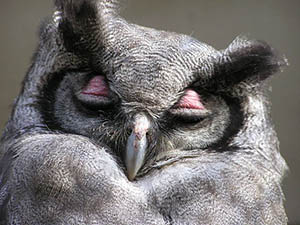 Over 12 million Americans suffer from sleep apnea, which causes them to stop breathing multiple times during sleep. This results in fatigue and can lead to serious consequences such as hypertension, dysrhythmia, heart attack, and stroke. Sleep apnea can also lead to poor memory, weight gain, headaches, impotence, and job impairment. After this Brazilian study came out as a treatment for obstructive sleep apnea (OSA) which showed immediate effects in reducing noctural respiratory events, we started using these protocols in our clinic and we love the results.
Over 12 million Americans suffer from sleep apnea, which causes them to stop breathing multiple times during sleep. This results in fatigue and can lead to serious consequences such as hypertension, dysrhythmia, heart attack, and stroke. Sleep apnea can also lead to poor memory, weight gain, headaches, impotence, and job impairment. After this Brazilian study came out as a treatment for obstructive sleep apnea (OSA) which showed immediate effects in reducing noctural respiratory events, we started using these protocols in our clinic and we love the results.The researchers hypothesize that this improvement is due to acupuncture’s effects on serotonergic pathways and also acupuncture’s anti-inflammatory effects.
Immediate effect of acupuncture on the sleep pattern of patients with obstructive sleep apneaAnaflávia O Freire, Gisele C M Sugai, Sônia Maria Togeiro, Luiz Eugênio Mello, Sérgio Tufik; Acupunct Med 2010;28:115-119. Department of Physiology, Universidade Federal de Sao Paulo, Unifesp Rua Botucatu 862, 04023-062 São Paulo/SP, Brazil. a.freire@unifesp.brAbstractBACKGROUND:Most patients with obstructive sleep apnea (OSA) do not tolerate treatment with nasal continuous positive airway pressure, the ‘gold standard’ treatment for this condition. It was shown in a pilot studythat acupuncture was more effective than placebo treatment (sham acupuncture) in producing significant changes in the respiratory events assessed by polysomnography (PSG).OBJECTIVES:To investigate the immediate effect of manual acupuncture (MA) and electroacupuncture (EA)on the sleep pattern of patients presenting with moderate OSA.METHODS:40 patients with an Apnea-Hypopnea Index (AHI) of 15-30/h were randomly allocated to MA treatment (n=10), EA 10 Hz treatment (n=10), EA 2 Hz treatment (n=10) and a no-treatment control group(n=10). The patients received MA or EA (2 or 10 Hz) just before the PSG study at 20:00.RESULTS:The AHI (p=0.005; p=0.005), the Apnea Index (p=0.038; p=0.009) and the respiratory events(p=0.039; p=0.014) decreased significantly in the MA and EA 10 Hz groups, respectively (AHI (21.9, 11.2),Apnea Index (5.15, 0.7), respiratory events (120.5, 61.0)in the MA group before and after. AHI (20.6, 9.9),Apnea Index (8.2, 0.3), respiratory events (117.0, 56.0)in the EA 10 Hz group before and after). The micro-arousals decreased only in the MA group (146.0 vs 88.5,p=0.0002). There were no significant changes in the EA2 Hz group or in the control group.CONCLUSION:A single session of either MA or EA 10 Hz had an acute effect in reducing the AHI as well as the number of nocturnal respiratory events of patients presenting with moderate OSA.



